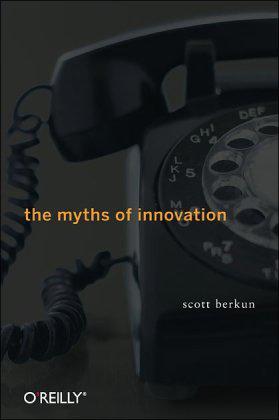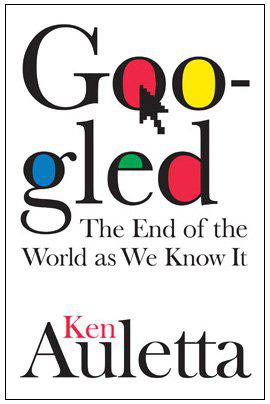-

The Myths of Innovation
How do you know whether a hot technology will succeed or fail? Or where the next big idea will come from? The best answers come not from the popular myths we tell about innovation, but instead from time-tested truths that explain how we've made it this far. This book shows the way. In The Myths of Innovation, bestselling author Scott Berkun takes a careful look at innovation history, including the software and Internet Age, to reveal how ideas truly become successful innovations-truths that people can apply to today's challenges. Using dozens of examples from the history of technology, business, and the arts, you'll learn how to convert the knowledge you have into ideas that can change the world. Why all innovation is a collaborative process How innovation depends on persuasion Why problems are more important than solutions How the good innovation is the enemy of the great Why the biggest challenge is knowing when it's good enough "For centuries before Google, MIT, and IDEO, modern hotbeds of innovation, we struggled to explain any kind of creation, from the universe itself to the multitudes of ideas around us. While we can make atomic bombs, and dry-clean silk ties, we still don't have satisfying answers for simple questions like: Where do songs come from? Are there an infinite variety of possible kinds of cheese? How did Shakespeare and Stephen King invent so much, while we're satisfied watching sitcom reruns? Our popular answers have been unconvincing, enabling misleading, fantasy-laden myths to grow strong." -- Scott Berkun, from the text. "Insightful, inspiring, evocative, and just plain fun to read it's totally great." -- John Seely Brown, former Chief Scientist of Xerox, andDirector, Xerox Palo Alto Research Center (PARe; current Chief of Confusion "Small, simple, powerful: an innovative book about innovation." -- Don Norman, Nielsen Norman Group, Northwestern University; author of Emotional Design and Design of Everyday Things "The naked truth about innovation is ugly, funny, and eye-opening, but it sure isn't what most of us have come to believe. With this book, Berkun sets us free to try to change the world unencumbered with misconceptions about how innovation happens." -- Guy Kawasaki, author of The Art of the Start "Brimming with insights and historical examples, Berkun's book not only debunks widely held myths about innovation but also points the ways toward making your new ideas stick. Even in today's ultra-busy commercial world, reading this book will be time well spent." -- Tom Kelley, GM, IDEO; author of The Ten Faces of Innovation "This book cuts through the hype, analyzes what is essential, and more importantly, what is not. You will leave with a thorough understanding of what really drives innovation." -- Werner Vogels, CTO, Amazon.com "I loved this book. It's an easy-to-read playbook for anyone wanting to lead and manage positive change in their business." -- Frank McDermott, Marketing Manager, EMI Music Scott Berkun knows innovation. A member of the Internet Explorer team at Microsoft from 1994-1999, he is a full-time author at www.scottberkun.com and wrote the 2005 bestseller, The Art of Project Management (O'Reilly). He also teaches creative thinking at the University of Washington. -

Googled
A revealing, forward-looking examination of the outsize influence Google has had on the changing media Landscape. -

Groundswell
Corporate executives are struggling with a new trend: people using online social technologies (blogs, social networking sites, YouTube, podcasts) to discuss products and companies, write their own news, and find their own deals. This groundswell is global, it s unstoppable, it affects every industry and it s utterly foreign to the powerful companies running things now. When consumers you ve never met are rating your company s products in public forums with which you have no experience or influence, your company is vulnerable. In Groundswell, Charlene Li and Josh Bernoff of Forrester, Inc. explain how to turn this threat into an opportunity. Using tools and data straight from Forrester, you ll learn how to: -Evaluate new social technologies as they emerge -Determine how different groups of consumers are participating in social technology arenas -Apply a four-step process for formulating your future strategy -Build social technologies into your business including monitoring your brand value, talking with the groundswell through marketing and PR campaigns, and energizing your best customers to recruit their peers Timely and insightful, this book is required reading for executives seeking to protect and strengthen their company s public image. -

The Ten Faces of Innovation
Book Description Filled with stories of how Kraft, Procter & Gamble, Safeway, and Samsung have incorporated IDEO's thinking to transform the customer experience, The Ten Faces of Innovation is a guide to nurturing and sustaining a culture of continuous innovation and renewal. From Publishers Weekly Kelley's latest builds on The Art of Innovation, which celebrated the work culture that distinguishes his high-profile, award-winning industrial design firm, IDEO. This book covers much of the same territory, but focuses on the type of worker and team-building rather than the work environment. The authors define 10 personas, including Anthropologists, who contribute insights by observing human behavior; Experimenters, who try new things; Hurdlers, who surmount obstacles; Collaborators, who bring people together and get things done; and Caregivers, who anticipate and meet customer needs. Like its predecessor, the book is breezy and well written, with plenty of self-promotion. Kelley and Littman weave classic and recent stories of business innovation, such as 3M's Scotch tape, Volvo's three-point seatbelts and Netflix's mail-in DVDs, with IDEO's own success stories with clients ranging from the Boston Beer Company, for whom IDEO designed a new Sam Adams tap handle, to Organ Recovery Systems, for whom IDEO helped develop ways to expedite kidney transport. Aspiring business innovators and fans of The Art of Innovation may find further inspiration in this handbook. (Oct. 18) Book Dimension length: (cm)23.8 width:(cm)15.6 -

Change by Design
This book introduces design thinking, the collaborative process by which the designer’s sensibilities and methods are employed to match people’s needs with what is technically feasible and a viable business strategy. In short, design thinking converts need into demand. It’s a human-centered approach to problem solving that helps people and organizations become more innovative and creative. Design thinking is not just applicable to so-called creative industries or people who work in the design field. It’s an approach that has been used by organizations such as Kaiser Permanente to increase the quality of patient care by re-examining the ways that their nurses manage shift change or Kraft to rethink supply chain management. This book is for creative business leaders who seek to infuse design thinking into every level of an organization, product, or service to drive new alternatives for business and society. -

The Innovator's Dilemma
The Innovator's Dilemma demonstrates why outstanding companies that had their competitive antennae up, listened astutely to customers, and invested aggressively in new technologies still lost their market dominance. Drawing on patterns of innovation in a variety of industries, the author argues that good business practices can, nevertheless, weaken a great firm. He shows how truly important, breakthrough innovations are often initially rejected by customers that cannot currently use them, leading firms to allow their most important innovations to languish. Many companies now face the innovator's dilemma. Keeping close to customers is critical for current success. But long-term growth and profits depend upon a very different managerial formula. This book will help managers see the changes that may be coming their way and will show them how to respond for success. The Management of Innovation and Change Series.